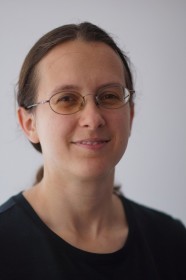
3:30 pm to 4:30 pm
Event Location: NSH 1305
Bio: Stefanie Tellex is an Assistant Professor of Computer Science and Assistant Professor of Engineering at Brown University. Her group, the Humans To Robots Lab, creates robots that seamlessly collaborate with people to meet their needs using language, gesture, and probabilistic inference, aiming to empower every person with a collaborative robot. She completed her Ph.D. at the MIT Media Lab in 2010, where she developed models for the meanings of spatial prepositions and motion verbs. Her postdoctoral work at MIT CSAIL focused on creating robots that understand natural language. She has published at SIGIR, HRI, RSS, AAAI, IROS, ICAPs and ICMI, winning Best Student Paper at SIGIR and ICMI, Best Paper at RSS, and an award from the CCC Blue Sky Ideas Initiative. Her awards include being named one of IEEE Spectrum’s AI’s 10 to Watch in 2013, the Richard B. Salomon Faculty Research Award at Brown University, a DARPA Young Faculty Award in 2015, and a 2016 Sloan Research Fellowship. Her work has been featured in the press on National Public Radio, MIT Technology Review, Wired UK and the Smithsonian. She was named one of Wired UK’s Women Who Changed Science In 2015 and listed as one of MIT Technology Review’s Ten Breakthrough Technologies in 2016.
Abstract: Robots can act as a force multiplier for people, whether a robot assisting an astronaut with a repair on the International Space station, a UAV taking flight over our cities, or an autonomous vehicle driving through our streets. To achieve complex tasks, it is essential for robots to move beyond merely interacting with people and toward collaboration, so that one person can easily and flexibly work with many autonomous robots. The aim of my research program is to create autonomous robots that collaborate with people to meet their needs by learning decision-theoretic models for communication, action, and perception. Communication for collaboration requires models of language that map between sentences and aspects of the external world. My work enables a robot to learn compositional models for word meanings that allow a robot to explicitly reason and communicate about its own uncertainty, increasing the speed and accuracy of human-robot communication. Action for collaboration requires models that match how people think and talk, because people communicate about all aspects of a robot’s behavior, from low-level motion preferences (e.g., “Please fly up a few feet”) to high-level requests (e.g.,”Please inspect the building”). I am creating new methods for learning how to plan in very large, uncertain state-action spaces by using hierarchical abstraction. Perception for collaboration requires the robot to detect, localize, and manipulate the objects in its environment that are most important to its human collaborator. I am creating new methods for autonomously acquiring perceptual models in situ so the robot can perceive the objects most relevant to the human’s goals. My unified decision-theoretic framework supports data-driven training and robust, feedback-driven human-robot collaboration.
